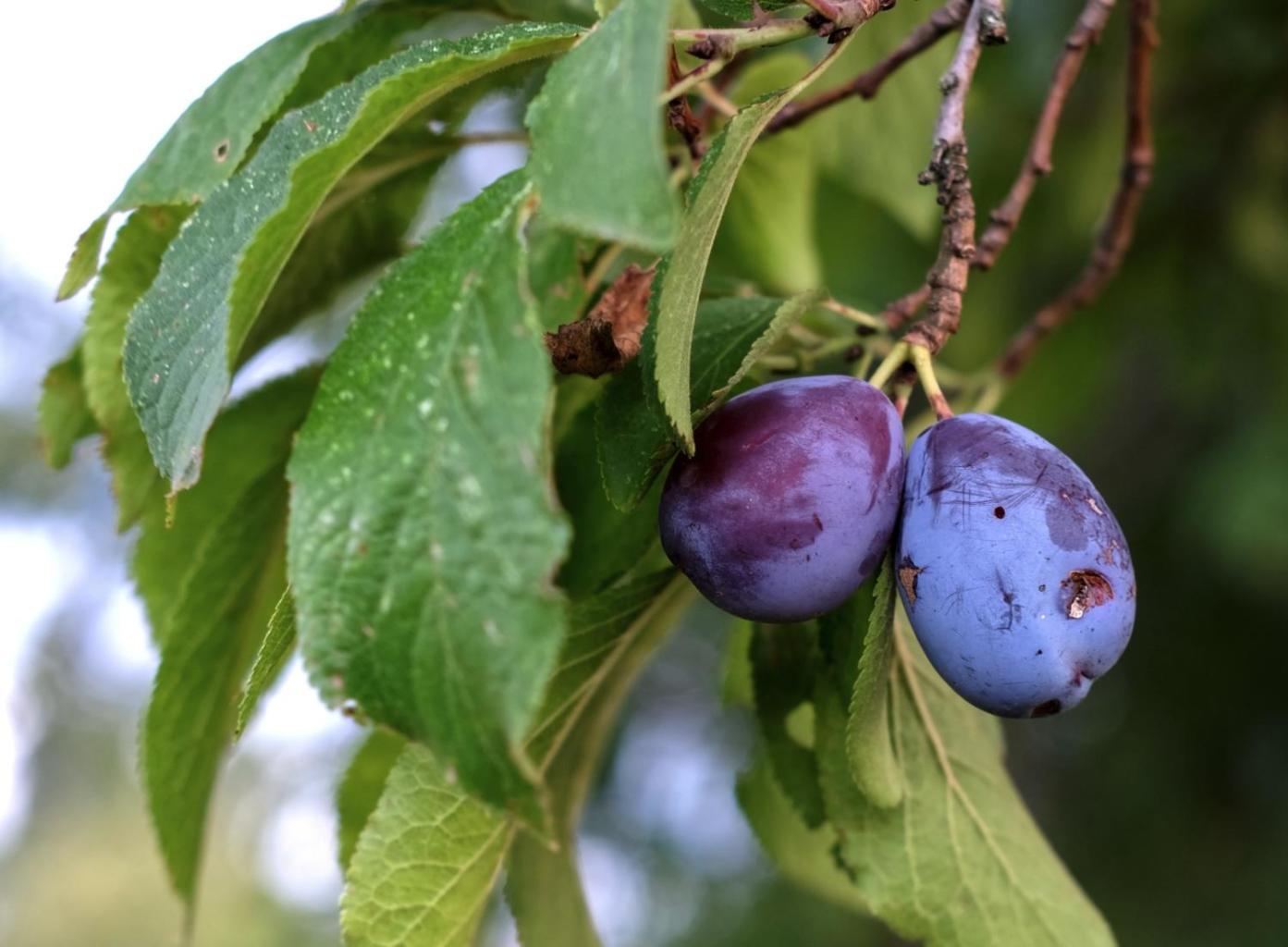By Tony Chalcraft.

It looks, as I write a month or so before the first trees will have ripe fruit, to be a good year for plums. This makes a change as the last few seasons have been disappointing. Various difficulties had me wondering whether there’d ever be a worthwhile crop of plums again. It’s still too early to be sure there’ll be a decent harvest this year but some of the trees, notably the cooker Early Rivers and especially the late-ripening Marjorie’s Seedling have lots of hanging, albeit still very green, fruit. Miraculously, there are even some plums set on the notoriously shy fruiting but delectable Old Greengage. The only trees to let the show down are Victoria and Czar out on the field orchard which, being more exposed, was affected by poor late March and early April weather.
Quite why this plum season looks more promising than in recent years is unclear. What is apparent though are some of the causes of recent poor pickings. Late frosts are a perpetual plague for the plum grower. It seems the trend to milder winters has induced earlier flowering, making blossom vulnerable if temperatures dip well below zero on a still and clear late March night. This year, with the spring slow and fitful, flowering was delayed so that any frost, at least in the sheltered garden, was less intense by the time the trees reached peak bloom comparatively late in early April. Another habit, from which a number of the trees may have benefited, is the tendency of some plum varieties to take ‘rest’ years. These are seasons following a heavy crop where a tree will carry next to no fruit. It could be, after a couple of years’ break from fruiting, some of the trees can set and sustain more plums.
Another cause of poor plum crops in recent seasons has been wood pigeons. These birds, which are now ever-present in most gardens, have developed a taste for young plum leaves as they emerge in spring. In tearing at the leaves they not only strip the foliage from any branches thick enough to allow them to perch but also knock off fruit buds with their crashing and clattering. This year wood pigeons were as plentiful as ever but while many were partly stripped of leaves; the impact on blossoming, perhaps because there were more buds, appears to have been less damaging.
All this bodes well for a good crop, but there’s one final threat that could yet mean, while there may be plums a plenty, many will be despoiled. I’ve mentioned previously that one of the perils of plum growing is the plum moth (Latin name Grapholita funebrana) which has become more prevalent over the last ten or so years. It’s in July that this insect is most active. The eggs it lays on swelling fruit hatch into caterpillars that burrow deep into the flesh of plums. Infested fruits, which the caterpillar has often left before it is picked, have a mushy brown centre that is acrid in taste. It’s often difficult to be sure whether a plum has been attacked until it is cut open. Eating plums straight from the tree can be an adventurous experience in a bad moth year! Hopefully, the plum moth will not be too severe this season. Pheromone traps can be deployed to trap male moths but these are expensive and far from perfect in providing protection. Previous experience suggests it’s just as effective to rely on the strength of numbers. In a year where a lot of plums have set a lower proportion are likely to be invaded by the moth. A good plum year is overdue; let’s hope this will finally be it!











Add a comment